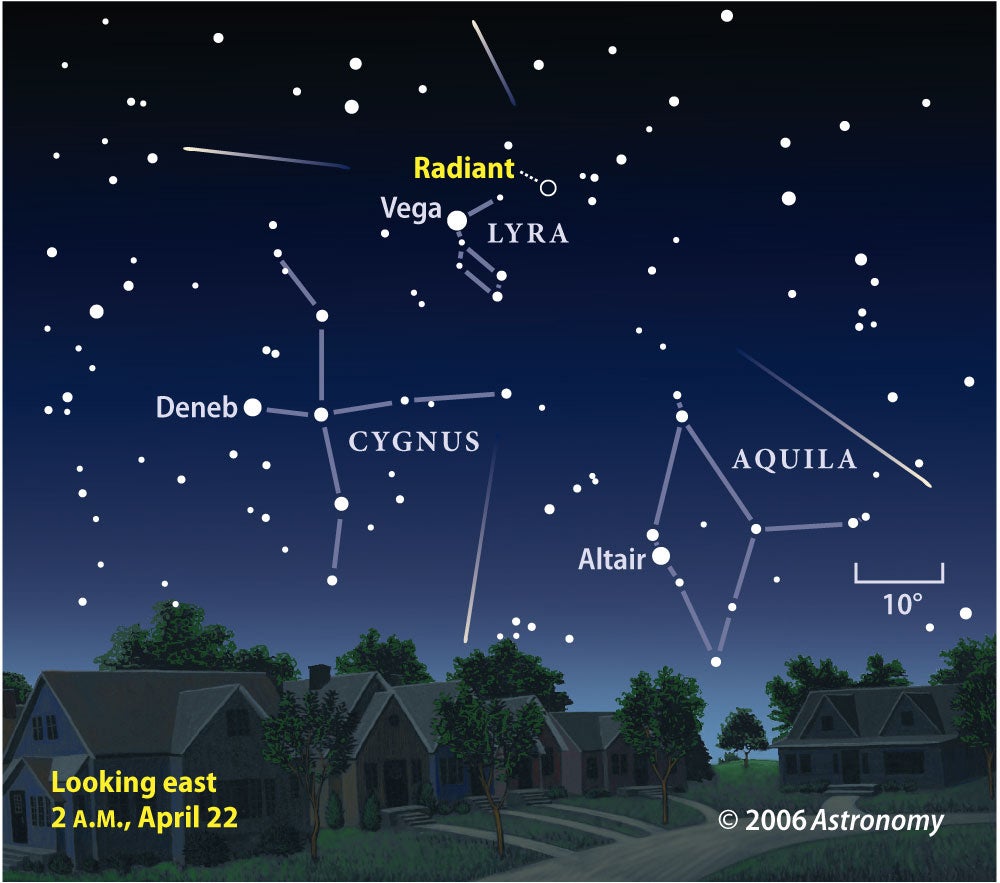
Take a look
All you need to observe a meteor shower is your eyes – and a lawn chair if you don’t want to strain your neck. Some people enjoy counting the number of meteors per hour, either by jotting down ticks on a notepad or talking into a tape recorder. Observing a meteor shower can be a great social event, so get some people together Friday night and make it a party.
April showers
Spring’s warm weather makes the Lyrids the start of meteor-watching season. Watch for the Eta Aquarids later in the month. They’ll be visible starting April 19, with a May 6 peak best seen from the Southern Hemisphere. This is one of two showers derived from Halley’s Comet (the other is the Orionids in October).
What’s happening
Meteor showers occur when Earth passes through debris left by a passing comet or asteroid. For the Lyrids, the parent comet is C/1861 G1, whose debris enters our atmosphere at some 108,000 mph, a modest speed by meteor standards. Air friction incinerates the dust-size particles, creating the bright but brief flashes of light we see as meteors.
More Astronomy resources:
Astronomy news
This week’s sky events
Astronomy basics
Glossary of astronomical terms
Return to Astronomy “For the media” page
Matt Quandt
Assistant editor
Astronomy magazine
[t] 262.796.8776 x419
[e] mquandt@astronomy.com
April 18, 2006
WAUKESHA, WI – The Lyrid meteor shower peaks the night of April 21/22. After midnight, as many as 20 meteors an hour will streak across the sky. The shower’s radiant, the point in the sky where they appear to shoot from, lies in the constellation Lyra the Lyre. The waning crescent Moon will stay out of the way that night, so the sky will be dark – and the show should be good. For several nights before and after the peak, fewer meteors will be visible.









